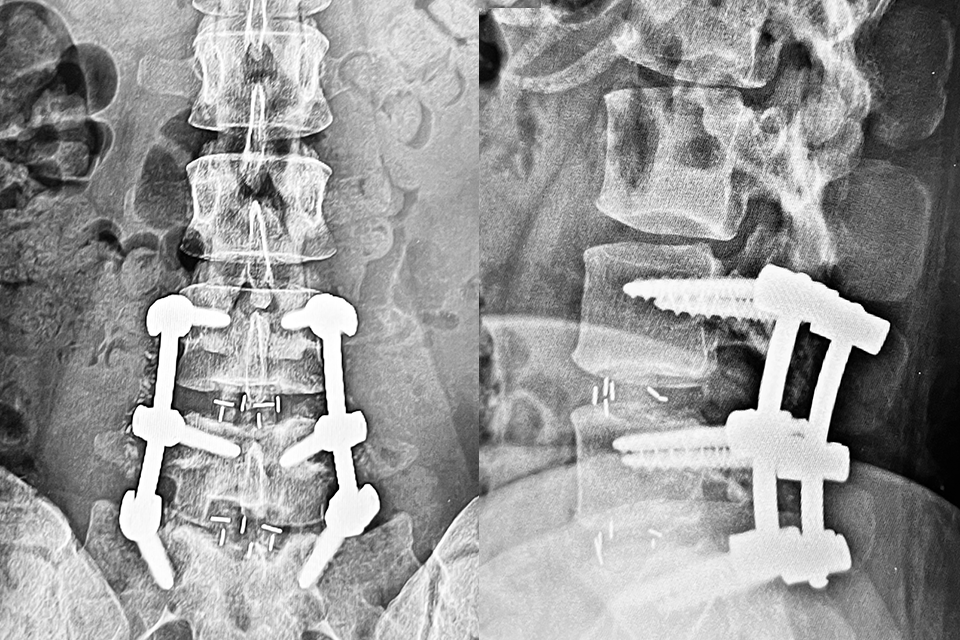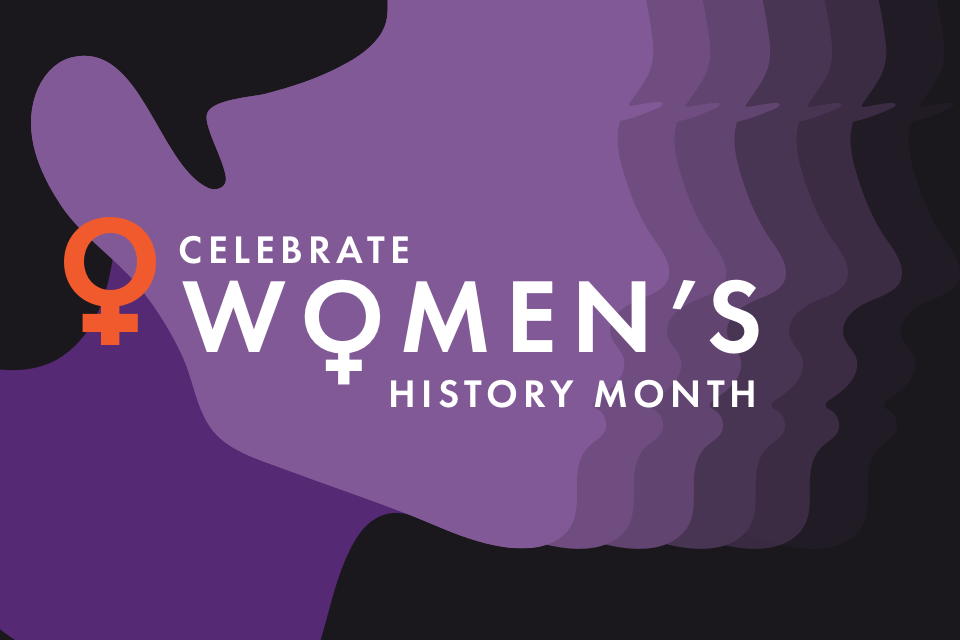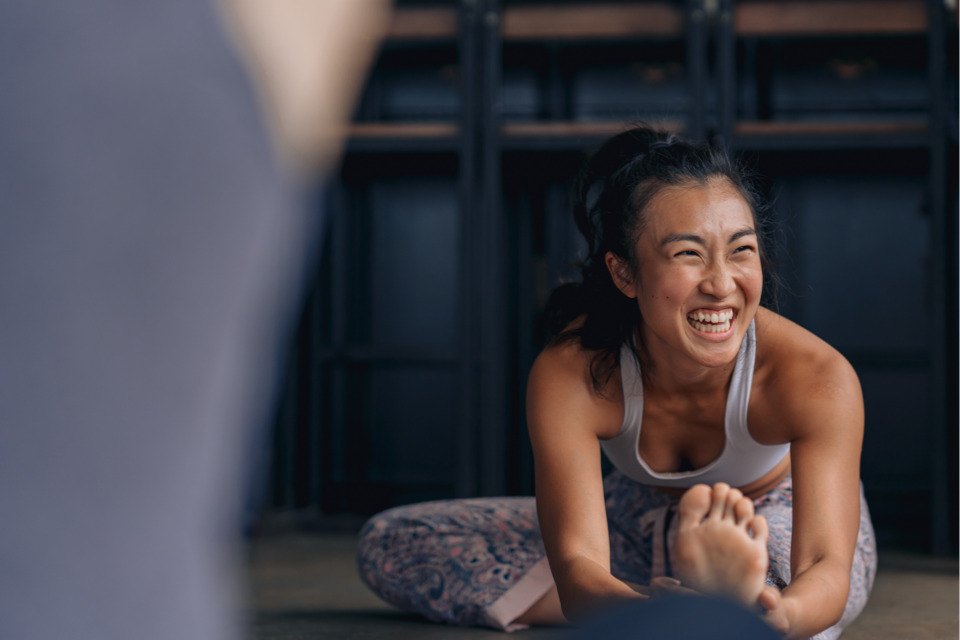I’ve lived with different levels of chronic back pain for almost 10 years. This year, at 27, I decided to get a lumbar spinal fusion as my third (and *hopefully* final) back surgery. I’m not going to lie and say the past three years of my life haven’t been super traumatic.
I was diagnosed with lumbar spondylosis, retrolisthesis, and fact effusions – a bunch of fancy medical words that mean nothing to most people. To me, it meant the discs in my spine were rapidly degenerating, pinching on my sciatic nerve, rubbing on top of each other, and slipping back behind one another because my facet joints weren’t healthy enough to hold them in place. At any given time, the result of these conditions varied from a combination of:
- Constant lower back pain
- Burning, cramping, shooting pains down both of my legs
- Numbness and tingling in my legs and feet
- Reduced strength in the right side and lower half of my body
My doctor always joked that I had “early-onset bad genes.” Meaning, I could have unknowingly lived with these conditions for a big chunk of my life, but the pain would have eventually caught up with me. In college, I was in a car accident that sped up my timeline. How lucky was I to experience this in my early 20s??
In 2019, these conditions lead to my first L4-L5, L5-S1 disc herniations. I experienced excruciating levels of pain that quite honestly made me want to die. I went through the proper rounds of physical therapy and medication management. After months of treatment, still unable to sit or live comfortably, I was recommended for a microdiscectomy. It was a minimally invasive back surgery – supposedly quick and easy. The doctor cut me open and shaved down the discs pressing on my sciatic nerve. Surely this would be blip in my life so I could get back to normal…
That worked for about six months until I herniated the same discs again. After a first herniation, the odds of experiencing a second in the same location are 10% to 15%. I got screwed. I didn’t want another surgery. I was motivated to try and be a normal 26-year-old, living as best I could with weekly physical therapy, muscle relaxers, steroid packs, Neurontin, cortisone shots, and opioids to help my pain subside. Normal, right?
During this time, I was also starting a new job in marketing at VIDA. Being at odds with my body, I’ve always had a love/hate relationship with working out – viewing it as something that I had to do. I understand and greatly appreciate its benefits, but I wasn’t confident about how to exercise properly around my condition.
Call it kismet when Andrea van Zile, Director of VIDA Pilates, randomly emailed me asking if I was interested in participating in Pilates comprehensive teacher training. I laughed so hard. I’d never done Pilates before and was wasting away on my couch in pain. Why would I be interested in teacher training? So, I replied that I had a back injury, and I wasn’t the wannabe instructor she was hoping for. She replied that Pilates was exactly what I needed and offered me a private session to discuss my fitness goals.
At this point, my pain levels were repeatedly being gaslit by my doctors who said I was too young to feel this way and dismissed me. Pain fogged up my brain so much that it became really hard to envision a future for myself and want to keep going. And even though I knew something was wrong, I was essentially told to keep on keeping on during every visit. So sure, why not try Pilates? I had nothing to lose.
I was ready to get stronger physically, but what I didn’t know at the time was how the practice of Pilates creates a stronger mind-body connection. “When Olivia walked into my studio, I could immediately understand the depth of her struggle beyond issues with muscles or spinal tissue. She needed to be seen as a whole being,” said van Zile. She continued, “As a teacher who has worked with hundreds of students with an array of ailments, I knew Pilates could help her.”
Andrea immediately validated and helped me understand myself in ways that doctors and physical therapists had never been able to. After my first reformer session, I felt some relief – both mentally and physically. Our sessions quickly became the thing I most looked forward to. And although my pain eventually got to a point where the relief of Pilates only lasted a short while, Andrea supported me through getting another discectomy. She treated my body like a mystery that she wanted to solve and made it fun for me. Little did we know a piece of my spine had chipped off and was floating around causing all sorts of problems.
Two weeks into my recovery, I herniated the same discs for the third time. When I googled those stats, nothing explicit to this situation even came up because generally, it shouldn’t have to get to this point. I got screwed. I couldn’t get off my pain medications or leave my bed for extended periods of time.
Since I began Pilates training, Andrea had emphasized the perspective that power lies in knowing what you don’t know. When my recovery process was not on track given my procedure, age, and overall health, this belief validated my feelings that something was off. It helped me grapple with the fact that a more serious change needed to occur. “The body speaks for a reason. We have to listen to what it’s saying and be our own best advocates with medical professionals. If your gut tells you that a doctor is not right for you, find another one,” said van Zile.
Finding a new doctor who validated my experience, getting my joints removed, and my spine replaced with a bunch of bionic shit was the scariest decision I’ve ever made. But it was also the best one. I literally got screwed.
The minute I was cleared for physical therapy and approved exercises, I started Pilates again. This year, I pushed myself to extreme limits I never knew to be possible and discovered a new, deep love for training in VIDA Pilates. It has truly changed my life and provided me with the vision of getting a “normal” future back with goals to work towards. Instead of viewing exercise as something I have to do, I am now able to see it as something I get to do. And that change of perspective is powerful.
It’s going to take a lot more time for me to be completely healed. My mind is still doing a lot of hard work catching up as I’m slowly learning how to harness this trauma and turn it into power. I still have residual pain and bad days. But Pilates has equipped me with the proper tools to take back the control in my life.
At four months post-op, I am the strongest and most confident I’ve ever been in my body.
It’s taken me a long time to feel comfortable talking about my journey, but now it feels selfish not to. As we build up this program professionally, I wanted to share how much it means to me and my recovery personally. Without a doubt, VIDA Pilates is one of the main reasons I’m standing here today. And no matter your situation or fitness level, I know that this is something that can help you too.
If you are struggling with mental health and need support, there are resources available to help. Call or text 988 to be connected with behavioral health and mental health crisis services, or visit https://988lifeline.org/.








